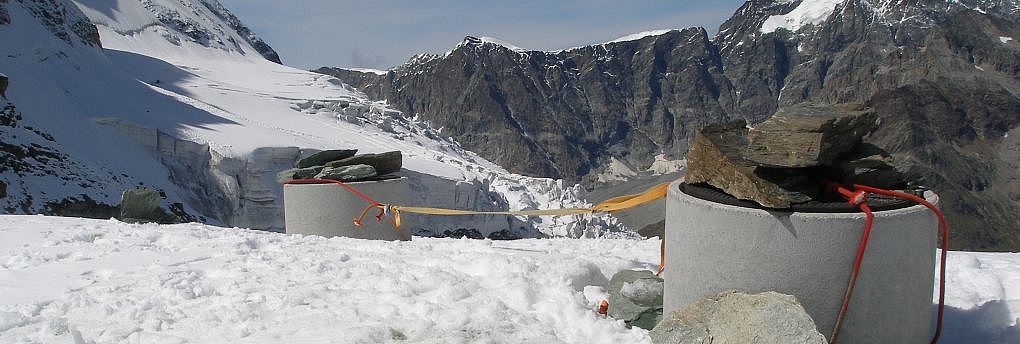
Monitoring
Climate and topography primarily determine where permafrost occurs in the Swiss Alps. A warming atmosphere generally leads to warming permafrost, and eventually to its thawing. We use different long-term measurements to observe the permafrost and its mostly invisible changes in the underground. The data obtained also help us to better understand the complex processes between the atmosphere, the surface and the permafrost at depth.
Permafrost is a key variable to characterize the Earth's climate and its changes. To distinguish short-term fluctuations from long-term trends, we need long and comparable data series. Temperature changes from the surface are increasingly attenuated and delayed with depth. It takes about half a year before they reach a depth of about ten metres. Below a depth of 15–20 metres, seasonal fluctuations become negligible and the temperature changes in the permafrost reflect the long-term climate trend.
To measure temperatures in the permafrost directly, we have equipped boreholes with measuring instruments at more than twenty locations in the Swiss Alps over the past twenty years. The boreholes are located in ice-bearing scree slopes and rock glaciers as well as in steep rock and near high mountain structures. We also collect long term data of temperatures at the surface, rock glacier velocities and changes in the ground ice content in the permafrost. A significant part of our work is an essential pillar of the Swiss permafrost monitoring network PERMOS , which the SLF coordinates together with the University of Fribourg. The data and results obtained are also a central basis for research and practice: they are used for model validation or input, as well as for the planning and management of infrastructure and natural hazards in high mountain regions.